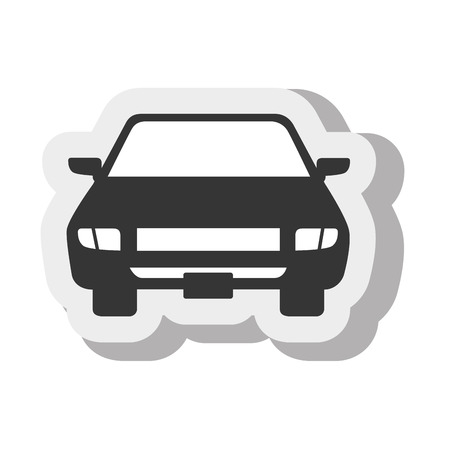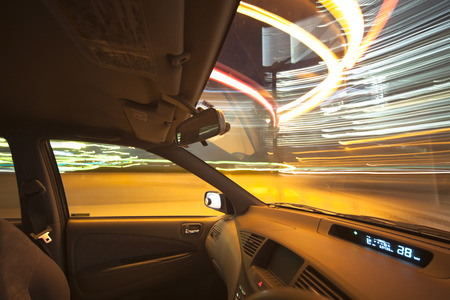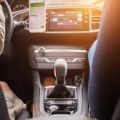1. Introduction to Tesla’s Autopilot and Full Self-Driving
Tesla is at the forefront of autonomous driving technology with its Autopilot and Full Self-Driving (FSD) systems. While many people use these terms interchangeably, they are actually distinct features with different levels of capability. Understanding their differences, advantages, and limitations is key to evaluating how Tesla compares to other self-driving technologies on the market.
What is Tesla’s Autopilot?
Autopilot is Teslas advanced driver-assistance system (ADAS) designed to assist with driving tasks. It comes standard on all new Tesla vehicles and includes several features to enhance safety and convenience.
Key Features of Autopilot:
- Traffic-Aware Cruise Control: Maintains a set speed while adjusting based on surrounding traffic.
- Autosteer: Helps keep the vehicle centered in its lane on highways.
- Forward Collision Warning: Alerts the driver of potential collisions.
- Automatic Emergency Braking: Applies brakes to avoid or minimize crashes.
What is Tesla’s Full Self-Driving (FSD)?
Full Self-Driving (FSD) is Tesla’s more advanced system, designed to provide higher levels of autonomy. Unlike basic Autopilot, FSD is a paid upgrade that offers additional capabilities.
Key Features of FSD:
- Navigate on Autopilot: Enables automatic highway driving, including lane changes and exits.
- Auto Lane Change: Assists with passing other vehicles by changing lanes automatically.
- Summon: Allows the car to move in and out of parking spaces with minimal driver intervention.
- Autopark: Automatically parks the vehicle in parallel or perpendicular spaces.
- Traffic Light and Stop Sign Control: Detects traffic lights and stop signs, slowing or stopping accordingly.
Differences Between Autopilot and Full Self-Driving
While both Autopilot and FSD improve driving automation, they serve different purposes. Autopilot focuses on driver assistance, whereas FSD aims to bring near-autonomous driving. The following table highlights the key differences:
| Feature | Autopilot | Full Self-Driving (FSD) |
|---|---|---|
| Traffic-Aware Cruise Control | ✔ | ✔ |
| Autosteer | ✔ | ✔ |
| Navigate on Autopilot | ✘ | ✔ |
| Auto Lane Change | ✘ | ✔ |
| Summon | ✘ | ✔ |
| Autopark | ✘ | ✔ |
| Traffic Light and Stop Sign Control | ✘ | ✔ |
Limitations of Tesla’s Self-Driving Technology
Despite its advancements, Teslas self-driving technology has its limits. Autopilot and FSD still require driver supervision. They are not fully autonomous and do not replace the need for human control in complex driving scenarios. Road conditions, unexpected obstacles, and regulatory restrictions can all impact performance.
Important Limitations to Consider:
- No Full Autonomy: Tesla vehicles are not fully self-driving yet and require driver attention at all times.
- Limited in Certain Conditions: Poor weather, construction zones, and complex urban environments can reduce system reliability.
- Regulatory and Legal Challenges: Self-driving laws vary by location, and Teslas technology may not be legally usable in some areas.
Conclusion
While Tesla continues to innovate its Autopilot and FSD systems, they still require human supervision and are not yet fully autonomous. Understanding their capabilities and limitations helps drivers know what to expect from Tesla’s self-driving technology.
2. How Tesla’s Self-Driving Technology Works
Tesla has a unique approach to autonomous driving that relies on a combination of hardware, neural networks, and over-the-air (OTA) updates. Unlike many competitors that utilize LiDAR, Tesla prioritizes cameras, sensors, and advanced AI to process real-time driving data. Let’s break down the core components that make Tesla’s Autopilot and Full Self-Driving (FSD) features possible.
Hardware: Tesla’s Vision-Based System
Instead of using LiDAR, Tesla’s self-driving technology relies on a vision-based system powered by cameras, ultrasonic sensors, and radar (in some earlier models). The primary hardware components include:
| Component | Purpose |
|---|---|
| Eight Surround Cameras | Provide a 360-degree view around the vehicle |
| Ultrasonic Sensors | Help with close-range object detection |
| Tesla Vision (Radar-Free System in Newer Models) | Relies solely on cameras and AI to interpret the environment |
| Full Self-Driving Computer (FSD Chip) | Processes data from cameras and sensors with neural networks |
Neural Networks: The Brain Behind Autonomy
At the heart of Tesla’s self-driving capabilities lies its advanced neural network, which functions like an artificial brain, analyzing vast amounts of visual data in real-time. Tesla collects anonymized driving data from millions of cars on the road, feeding this data into its AI models to continuously refine and improve performance.
How Neural Networks Improve Tesla’s Self-Driving:
- Continuous Learning: Each Tesla vehicle acts as a data-gathering unit, sending information back to Tesla’s servers to improve AI models.
- Self-Improvement: Over time, Tesla’s neural network becomes more refined through massive datasets and machine learning techniques.
- Object Recognition: Tesla’s AI can detect pedestrians, vehicles, road signs, and other objects with increased accuracy.
Over-the-Air Updates: Constant Improvement Without New Hardware
One of Tesla’s biggest advantages is its ability to push software updates directly to vehicles via over-the-air (OTA) updates. These updates allow Tesla to refine self-driving features, improve safety, and introduce new capabilities without requiring a visit to a dealership.
Key Benefits of OTA Updates:
- Software Enhancements: Tesla vehicles continuously receive improvements, making them smarter over time.
- Bug Fixes and Safety Improvements: Rapid software updates help address issues without recalling cars.
- Feature Upgrades: Tesla can add new self-driving functionalities to existing vehicles through software updates.
How Tesla Stands Out
Compared to traditional automakers that rely on hardware updates, Tesla’s software-driven approach allows for faster innovation. By leveraging AI, neural networks, and real-world driving data, Tesla creates an autonomous driving experience that improves over time without requiring customers to purchase newer models.

3. Comparison with Competitors
When it comes to self-driving technology, Teslas Autopilot and Full Self-Driving (FSD) are often compared with other major players like Waymo, GM’s Cruise, and traditional automakers. Each company takes a slightly different approach to autonomous driving, using varied hardware, software, and strategies.
Tesla vs. Waymo
Waymo, a subsidiary of Alphabet (Google’s parent company), is a leader in fully autonomous driving. Unlike Tesla, which uses only cameras and neural networks, Waymo relies on lidar, radar, and high-definition mapping to navigate city environments.
Key Differences
| Feature | Tesla | Waymo |
|---|---|---|
| Technology | Camera-based vision, AI-driven neural networks | Lidar, radar, HD mapping |
| Operational Focus | Highway & city driving | Urban areas with predefined routes |
| Autonomy Level | Level 2-3 (with driver supervision) | Level 4-5 (completely autonomous in specific zones) |
| Commercial Deployment | Available to consumers as an optional package | Limited to ride-hailing services |
Tesla vs. GM’s Cruise
GM’s Cruise is another strong competitor in the self-driving space. Unlike Tesla, Cruise focuses entirely on autonomous ride-sharing rather than personal vehicle autonomy. Their self-driving taxis operate in designated areas and use lidar, cameras, and sensors for navigation.
Key Differences
| Feature | Tesla | Cruise |
|---|---|---|
| Technology | Vision-based AI with cameras | Lidar, radar, and cameras |
| Operational Focus | Consumer vehicles | Autonomous taxis |
| Autonomy Level | Level 2-3 | Level 4 |
| Commercial Deployment | Available for Tesla owners | Limited to specific cities |
Tesla vs. Traditional Automakers
Many traditional automakers like Ford, Mercedes-Benz, and BMW have also introduced driver-assist technologies similar to Tesla’s Autopilot. However, these systems are generally less advanced and rely on a combination of cameras, radar, and mapping.
Key Differences
| Feature | Tesla | Traditional Automakers |
|---|---|---|
| Technology | Camera-based AI | Radar, sensors, and limited AI |
| Autonomy Level | Level 2-3 | Level 2 |
| Availability | In all Tesla models | Only in select premium models |
Final Thoughts on the Comparison
Tesla’s approach to self-driving is unique in the industry because it prioritizes camera-based vision and a direct-to-consumer rollout. While other companies like Waymo and GMs Cruise are further along in autonomy levels, their technology is restricted to controlled environments. Meanwhile, traditional automakers are still catching up, with their systems focused more on offering driver assistance rather than full autonomy.
4. Regulatory and Safety Considerations
Regulatory Challenges Tesla Faces
Tesla’s Autopilot and Full Self-Driving (FSD) systems operate in a rapidly evolving regulatory environment. Unlike traditional automakers that follow defined rules for driver-assistance technologies, Tesla pushes the limits, often rolling out features via over-the-air updates without waiting for formal regulatory approval. This approach has sparked debates among regulators and industry experts.
Safety Concerns and Public Perception
Safety remains a key topic of discussion when it comes to Tesla’s advanced driver-assistance systems (ADAS). While Tesla claims that its vehicles with Autopilot engaged have lower crash rates compared to manual driving, some high-profile accidents have raised concerns about the system’s reliability and misuse. Critics argue that Tesla’s marketing may lead to driver complacency, while supporters believe the continuous software improvements enhance safety over time.
How Tesla’s Approach Differs from Competitors
Different companies handle regulatory and safety compliance in distinct ways. While companies like Waymo and Cruise take a slower, regulatory-first approach, Tesla tends to test and improve its technology in real-world conditions. Below is a comparison of their approaches:
| Company | Regulatory Approach | Testing Method |
|---|---|---|
| Tesla | Deploys features via updates and adjusts based on data feedback | Uses real-world drivers for extensive data collection |
| Waymo | Collaborates closely with regulators before public deployment | Relies on controlled environments and geofenced areas |
| Cruise | Works within strict regulatory frameworks | Operates self-driving taxis in limited test areas |
The Future of Tesla’s Compliance Efforts
As safety concerns and regulatory scrutiny increase, Tesla will likely need to adapt its strategy. More transparency in system capabilities and clearer driver usage guidelines may help alleviate concerns. Whether Tesla will continue pushing aggressive software updates or shift towards a more compliance-driven approach remains to be seen.
5. Five. The Future of Tesla’s Self-Driving Technology
Tesla has been at the forefront of autonomous driving, but where is it headed next? Experts and analysts have different takes on Teslas future in self-driving technology. While some believe Tesla will achieve full autonomy in the near future, others think regulatory challenges and technical hurdles could slow down progress.
Predictions for Tesla’s Autonomous Driving
Many industry insiders agree that Tesla’s self-driving capabilities will continue to evolve. Below are some predictions on what to expect:
| Prediction | Expert Opinion |
|---|---|
| Improved AI and Machine Learning | Tesla’s neural networks will get smarter, leading to better decision-making on the road. |
| Wider Regulatory Approval | More states and countries may approve Tesla’s self-driving tech for public roads. |
| Robotaxi Deployment | Elon Musk has hinted at Tesla launching a robotaxi service once full autonomy is reached. |
| Hardware Upgrades | Tesla may introduce new hardware to improve sensor accuracy and performance. |
Challenges Tesla May Face
Despite Teslas advancements, some challenges could slow down autonomous development:
- Regulatory Roadblocks: Different regions have different laws on self-driving cars, which could delay widespread adoption.
- Safety Concerns: Tesla’s Full Self-Driving (FSD) still requires human supervision, and accidents involving Tesla vehicles raise concerns.
- Competition: Other automakers and tech firms, such as Waymo and GM’s Cruise, are also working on self-driving solutions.
- Consumer Trust: Many drivers are hesitant to rely on self-driving software, which may hinder adoption rates.
How Tesla Could Evolve in the Industry
If Tesla continues pushing its autonomous driving efforts, we may see some major shifts in the automotive landscape:
Self-Driving Subscriptions
Tesla’s FSD subscription model could become more widespread, making self-driving features more accessible without a large upfront cost.
Integration with Smart Cities
As cities develop smarter infrastructure, Tesla could integrate its autonomous fleet into urban planning for increased efficiency.
More Advanced Real-World Data Collection
With millions of Teslas on the road contributing data, Tesla’s software improvements could accelerate compared to competitors relying on simulated testing.
Final Thoughts
While Tesla’s self-driving future holds great promise, challenges remain. With continuous software updates, hardware improvements, and regulatory changes, Tesla is likely to remain a dominant force in the autonomous driving industry.


